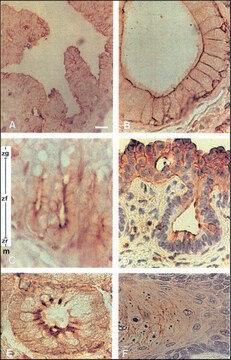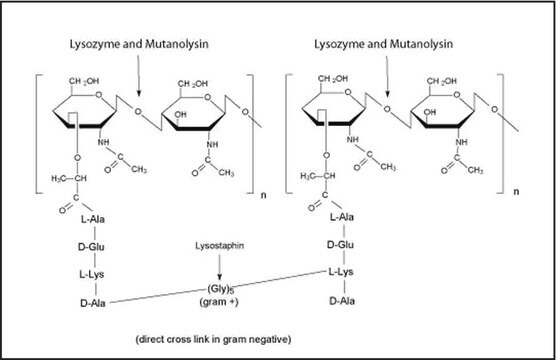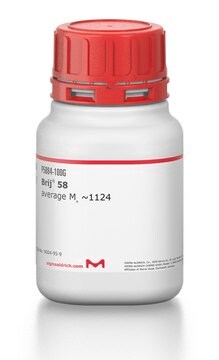A1806
Monoclonal Anti-Phosphotyrosine−Agarose antibody produced in mouse
clone PT-66, purified immunoglobulin, PBS solution
Sinónimos:
Monoclonal Anti-Phosphotyrosine, Phospho-Tyr, Phospho-tyrosine, p-Tyr
About This Item
Productos recomendados
biological source
mouse
recombinant
expressed in mouse cell line
conjugate
agarose conjugate
antibody form
purified immunoglobulin
antibody product type
primary antibodies
clone
PT-66, monoclonal
form
PBS solution
technique(s)
immunoprecipitation (IP): suitable
isotype
IgG1
capacity
1 mg/mL binding capacity
shipped in
wet ice
storage temp.
2-8°C
target post-translational modification
phosphorylation (pTyr)
¿Está buscando productos similares? Visita Guía de comparación de productos
General description
Immunogen
Application
- immunoprecipitation experiments for affinity-purification of phosphotyrosine proteins
- phosphotyrosine pulldown assays
- PI3-kinase assay
Biochem/physiol Actions
Physical form
Disclaimer
¿No encuentra el producto adecuado?
Pruebe nuestro Herramienta de selección de productos.
Storage Class
10 - Combustible liquids
wgk_germany
WGK 3
flash_point_f
Not applicable
flash_point_c
Not applicable
Certificados de análisis (COA)
Busque Certificados de análisis (COA) introduciendo el número de lote del producto. Los números de lote se encuentran en la etiqueta del producto después de las palabras «Lot» o «Batch»
¿Ya tiene este producto?
Encuentre la documentación para los productos que ha comprado recientemente en la Biblioteca de documentos.
Artículos
Post-translational modifications such as glycosylation, phosphorylation, and sulfation, to name a few, serve many functions. As a result, the analysis of proteins and their post-translational modifications is particularly important for the study of diseases where multiple genes are known to be involved, such as heart disease, cancer and diabetes.
Nuestro equipo de científicos tiene experiencia en todas las áreas de investigación: Ciencias de la vida, Ciencia de los materiales, Síntesis química, Cromatografía, Analítica y muchas otras.
Póngase en contacto con el Servicio técnico








